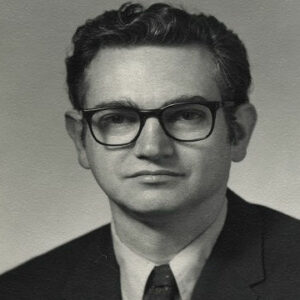Marshall W. Nirenberg was an American biochemist and geneticist who, with Har Gobind Khorana and Robert W. Holley, shared the Nobel Prize in Physiology or Medicine in 1968 for “cracking the genetic code.” For his contributions to genetics and biochemistry, he received a number of additional notable honors. He was born in New York City and became interested in biology at a young age. He got his B. Sc. and M. Sc. degrees in Zoology from the University of Florida at Gainesville as a young man before working on his Ph. D. at the University of Michigan’s Department of Biological Chemistry. He subsequently worked at the National Institutes of Health (NIH) as a research scientist, initially focusing on DNA, RNA, and protein. He demonstrated that messenger RNA is essential for protein synthesis and that synthetic messenger RNA preparations can be used to read various portions of the genetic code in cooperation with H. Matthaei. His innovative discovery earned him a position as the chief of the National Heart Institute’s Section of Biochemical Genetics, which he held until his death decades later. Neuroscience, brain development, and the homeobox genes were the focus of his later studies.
Childhood and Adolescence
Marshall Warren Nirenberg was born in New York City on April 10, 1927, to Minerva (Bykowsky) and shirtmaker Harry Edward Nirenberg. When he was a child, his family relocated to Florida.
Early on, he became interested in biology. He enrolled in the University of Florida in Gainesville, where he received his B. Sc. in 1948 and his master’s in zoology in 1952. He was also a Pi Lambda Phi fraternity member.
He became interested in biochemistry as a college student. He continued his studies at the University of Michigan, Ann Arbor, where he received his PhD in 1957 from the Department of Biological Chemistry. The research of a permease for hexose transport in ascites tumor cells was the subject of his Ph.D. thesis.
Career of Marshall W. Nirenberg
As a fellow of the American Cancer Society, he began his postdoctoral studies with DeWitt Stetten Jr. and William Jakoby at the National Institutes of Health (NIH) in 1957. (then called the National Institute of Arthritis and Metabolic Diseases). He was promoted to research biochemist there after a few years.
In 1959, he began researching the steps that connect DNA, RNA, and protein. Previous investigations by other scientists had established DNA as the molecule of genetic information by this time. However, it was unknown how DNA controlled protein expression or what function RNA had in these processes.
Nirenberg collaborated with Heinrich Matthaei, a German scientist, to understand the genetic code, demonstrating that messenger RNA is essential for protein synthesis and that synthesized messenger RNA preparations may be used to decipher various components of the genetic code.
He was able to determine the principles for translating genetic information in DNA into proteins, as well as the specific codons (a codon is a sequence of three chemical units of DNA) that specify each of the 20 amino acid units that make up protein molecules.
In 1961, during the International Congress of Biochemistry in Moscow, he presented his findings to a small group of scientists. His discoveries were hugely important to the scientific community, and he immediately became well-known for his work.
Nirenberg was appointed to the head of the National Heart Institute’s (now the National Heart, Lung, and Blood Institute) Section of Biochemical Genetics in 1962, a position he held until his death.
In his latter years, he shifted to neurobiology and studied neurology, neural development, and the homeobox genes.
Major Projects of Marshall W. Nirenberg
In 1961, at the National Institutes of Health, Marshall Nirenberg and Heinrich Matthaei became the first team to decipher the nature of a codon. They discovered that the polypeptide they had synthesized contained solely the amino acid phenylalanine after using a cell-free method to translate a poly-uracil RNA sequence. The amino acid phenylalanine was assigned to the codon UUU as a result of this discovery.
Achievements & Awards
President Lyndon B. Johnson awarded him the National Medal of Science in 1964 and the National Medal of Honor in 1968. In 1968, he was also awarded the Albert Lasker Award for Basic Medical Research.
The Nobel Prize in Physiology or Medicine was awarded to Marshall W. Nirenberg, Robert W. Holley, and Har Gobind Khorana in 1968 “for their interpretation of the genetic code and its function in protein synthesis.”
Personal History and Legacy
In 1961, Marshall Nirenberg married Perola Zaltzman, a chemist from Rio de Janeiro’s University of Brazil. After 40 years of marriage, his wife died in 2001.
In 2005, he married Myrna M. Weissman, Professor of Epidemiology and Psychiatry at Columbia University College of Physicians and Surgeons, for the second time. From this marriage, he has four stepchildren.
He died on January 15, 2010, at the age of 82, after a long battle with cancer.
Estimated Net Worth
The estimated net worth of Marshall W. Nirenberg is unknown.


